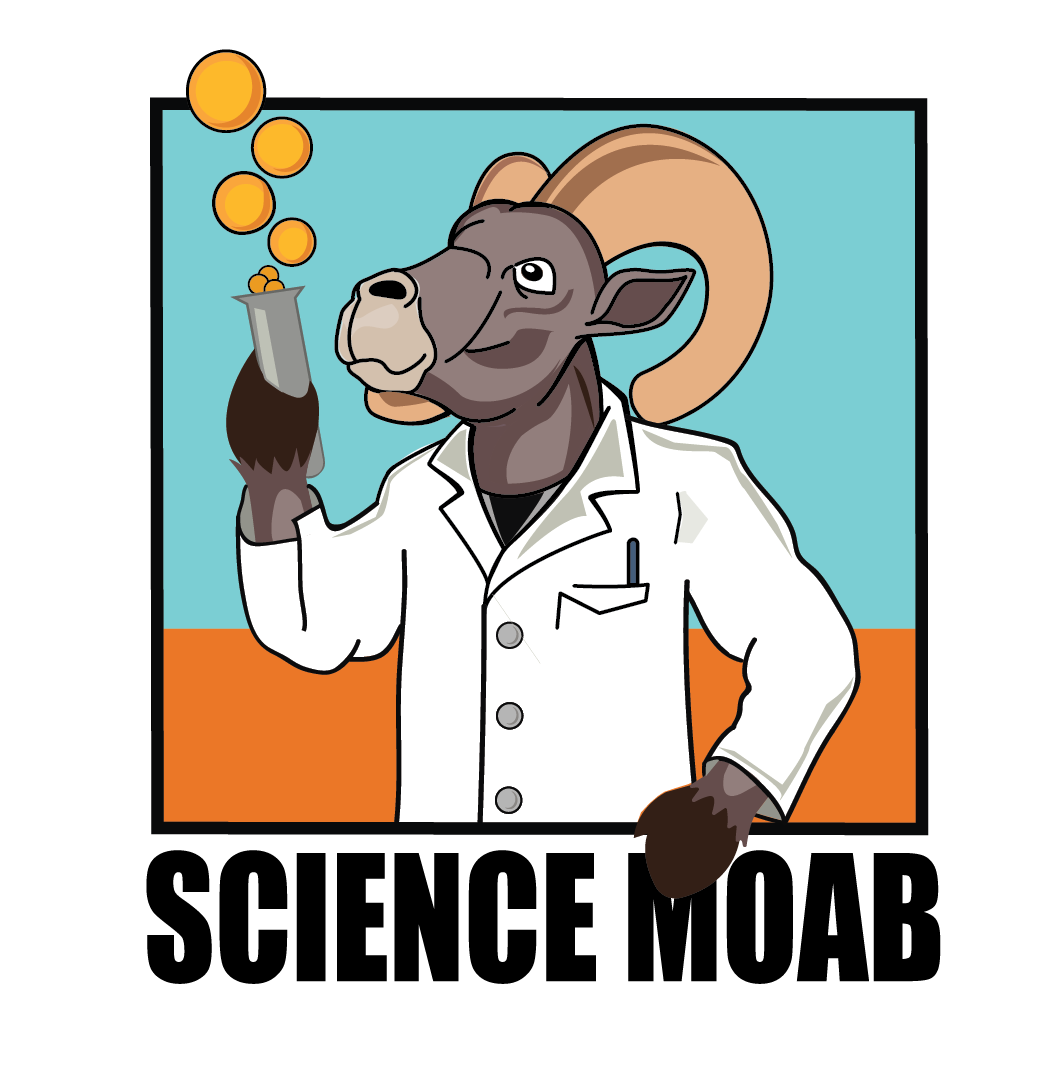Some information may be outdated.
Science Moab spoke with Dr. Matthew Bowker, an assistant professor at Northern Arizona University, who works to restore biological soil crusts (biocrusts) in deserts. These biological communities of lichens, mosses, cyanobacteria, algae and fungi living on the soil surface perform important functions in deserts around the world.
Science Moab: Why is biocrust restoration important in the Southwest?
Bowker: The number one thing about biocrusts, that most people are aware of, is that if they’re damaged or destroyed, they can take a long while to recover. In some situations, it seems like destroying the crust is a permanent event, either because that disturbance is followed by more disturbance or is just a really tough place for the crust to recolonize. So it would be incredibly beneficial to arid ecosystems if humans had a way to put back the crust without waiting five years, 10 years, 50 years, or 100 years, whatever time it happens to take.
Science Moab: How long does it take biocrust to come back after a disturbance?
Bowker: The struggle with that question is that people always want a number. And it’s not a number. It’s a big bag of different numbers depending on the situation. One of the things that recovery time depends on is what was the initial problem or disturbance? Was it truly just one footprint one time only or did you drive a bulldozer and remove the entire surface of the soil? Those are two extremely different settings. And the tiny little footprint disturbance is going to recover much faster than the bulldozer or the 10 million passes of a Jeep. The other factor is the environment of the disturbance. The drier and hotter areas are going to have a more prolonged crust recovery.
So a place like Moab is going to recover faster than probably say Death Valley or around Las Vegas, because they just don’t have the rainfall in those areas that Moab has. Even though Moab is quite dry, it’s relatively wet compared to some arid places. I’ve recently looked into this for a book and I collected every estimate of recovery time from around the world. It’s shockingly variable in different places. It ranges anywhere from a handful of years to a handful of millennia. So the range is outlandish, but the global average comes in around between 20 and 30 years.
This is maybe a side note, but it’s important to note that you have to define recovery in some specific way. That’s going to change your answer. If recovery is just ‘I can’t see my footprint,’ that might happen relatively fast. But if recovery means we have gotten back full biomass and full diversity and full function that requires a longer period of time than simple visual recovery. I think that’s really helpful though for clarifying the whole crust timeline debate.
Science Moab: How do you try to restore biocrust?
Bowker: Well, we’re trying to take the crust organisms out of the environment and see if we can make them grow fast. So like I said, the global average recovery is somewhere between 20 and 30 years, that’s a long time to wait just for an ecosystem to passively fix itself. And you might think that that means that biocrusts are inherently slow growers, but we’re finding that the reason they grow and recover slowly is because they’re limited by the environment. They’re limited by water. And they’re limited by nutrients. So if you start giving the crust water and nutrients, it turns out that they can grow pretty good. They can grow in weeks to months, depending on which specific organisms you’re trying to grow. Some of our tougher guys show modest growth over about five months, but some of our rock stars are doubling, tripling, quadrupling in eight weeks or so.
Science Moab: Okay, so you’re figuring out how to grow them quickly. And you’re doing this by giving them good growing conditions unlike what they’re getting when they’re outside?
Bowker: Exactly. So that means we can go from just a little bit of crust that we got out of the field and turn it into quite a bit more crust in the greenhouse or in the laboratory. Once we get really good at producing crust artificially like this, we hope to disperse that back out into damaged ecosystems that need an intervention and help them heal. So far, that part about getting our crust back out to the environment, has just been tried on a small scale in a few different places. We have had some success in some sites, getting them to live and to demonstrate that they’re doing important things in the soil, so it’s promising. We just need more effort and we need to up our game and optimize the process and expand the scale of what we can do.
This interview has been edited for length and clarity. To learn more and listen to the rest of Matt Bowker’s interview, visit www.sciencemoab.org/living-skin-earth.
Appreciate the coverage? Help keep local news alive.
Chip in to support the Moab Sun News.





